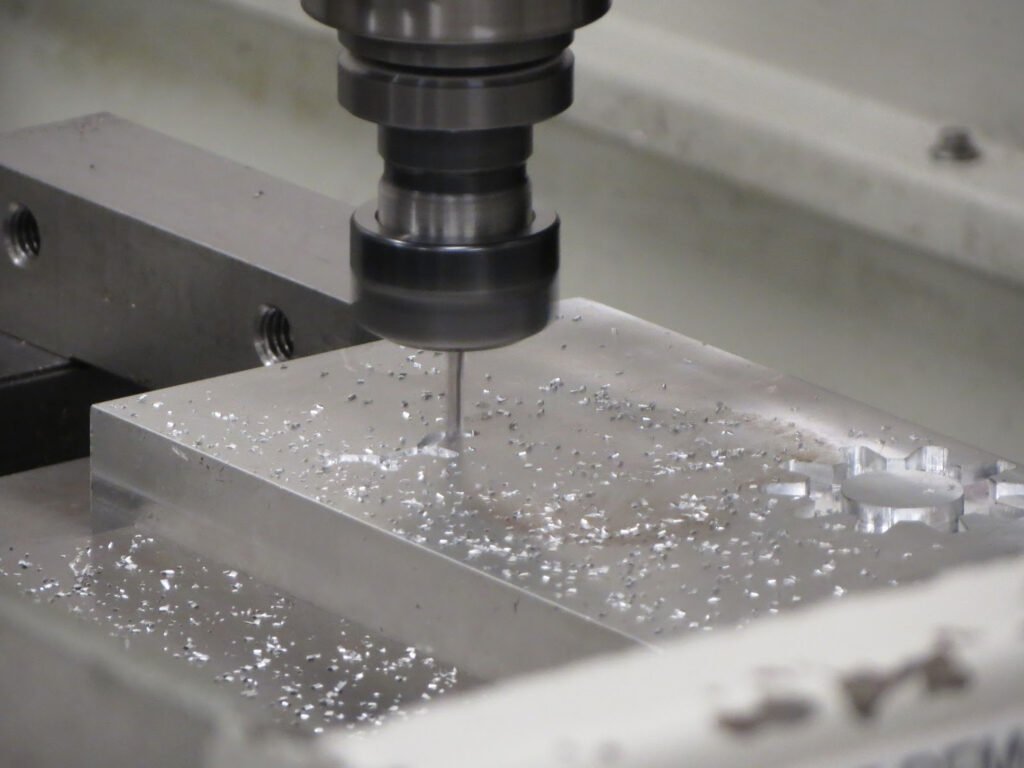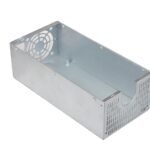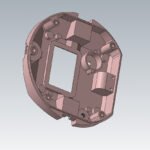Over the past decade, the manufacturing industry has gone through a renaissance. Large-scale production is now only feasible for large mega-corporations. And most manufacturers are now offering customizable and rapid machining services for small to medium-sized companies.
Rapid machining is a complex and confusing process that overlaps with several other manufacturing techniques.
So here is a simple explanation of rapid machining and its importance in the manufacturing sector.
What is Rapid Machining?
Rapid machining involves machining components, objects, and prototypes in such a way as to minimize the total lead time. CNC machining is the gold standard for rapid machining. It is quick, precise, and flexible. For larger assemblies, CNC turning and milling are used for complex parts, while manual machining may be used for simpler components.

Rapid Machining vs. Rapid Prototyping (RP)
Prototyping is the process of creating models of designs and improving them with further iterations. Most products go through multiple prototype iterations before landing on a final design that enters mass production.
Rapid prototyping utilizes various manufacturing techniques to improve production cycle times. The goal is to shorten production times between each prototype iteration. Eventually, the time savings will stack, leading to a significant decrease in time costs.
This method utilizes both CNC machining and 3D printing techniques, meaning rapid machining is essentially a type of rapid prototyping. As a matter of fact, before additive manufacturing and 3D printing became popular, CNC machining was the preferred method of rapid prototyping.
RP is a necessity for most upstarts and newcomers. Though you might be tempted to use additive manufacturing options, in most cases, rapid machining is the best choice.
Here is a brief comparison of CNC machining against the most popular 3D printing option, FDM (fused deposition modeling) and SLA (Stereolithography).

Rapid Machining vs. Additive Manufacturing (AM)
Instead of cutting material from a block of the workpiece, additive manufacturing builds up parts by adding more material layer by layer. Additive manufacturing is a whole collection of manufacturing techniques and processes. Following is a brief breakdown of the seven basic types of AM processes.
1.VAT Polymerization (Resin 3D Printing)
2.Material Jetting
3.Material Extrusion (FDM 3D Printing)
4.Binder Jetting
5.Powder Bed Fusion (Metal Powder 3D Printing)
6.Sheet Lamination
7.Direct Energy Deposition
Most of these processes are extremely expensive, as they require large, complicated machines and exotic material choices.
Rapid machining uses standard CNC milling and truing operations, which are time and cost-effective alternatives. Additionally, unlike most AM processes, CNC machining uses standard commercially available materials. Making material sourcing much easier and quicker. Powder bed fusion specifically uses special metal powders that are very difficult to produce and has an exponentially higher cost.
Following is a brief comparison between rapid machining and additive manufacturing.

Rapid Machining vs. Traditional Manufacturing (TM)
Just like additive manufacturing, traditional manufacturing is composed of several processes. The biggest drawback of TM is time, and prototype development can often take years to finish. The traditional manufacturing industry is aimed at mass production. Thus, it is not suited for customizations and changes, leading to a stagnancy in innovation.
Some common traditional manufacturing processes include the following.
- Die-Casting
- Injection Molding
- Machining (CNC and Non-CNC)
- Plastic Forming
- Etc.
As you can see, TM also includes the CNC machining process. However, the rapid machining approach is a complete overhaul of the traditional method. Where traditional manufacturing relies on long conveyor belts and single-task CNC operations, rapid machining uses short setups designed for quick tool swaps and material changes.
Following is a brief comparison between rapid machining and traditional manufacturing.

Why is Rapid Machining so Important?
Rapid machining has always been the go-to manufacturing method for designers and engineers. However, recent years have seen an expansion in the rapid machining market, leading to a wider client base for the process. Rapid machining has become an integral part of the manufacturing sector.
The importance of rapid machining can be credited to the following factors.

Availability
Rapid machining services are more easily accessible to people all over the world. With mature global shipping routes, you can get machining services from other countries with the minimum effect of lead times.
Traditionally you would have had to track down large factories or manufacturers and spend time and money negotiating with them. But now, you can contact any of the several global rapid machining service providers.
China alone has several hundred manufacturers that offer rapid machining services and are just one click away.
Convenience
Modern product design revolves around digital files made using CAD (computer-aided design) software. CNC machines, like the ones used for rapid machining, are natively compatible with CAD files. Prototyping is as simple as sending a CAD design to the manufacturer and waiting for a day or two.
Additionally, if you need to make minor changes to the design, you can adjust it on the CAD file and resend it to the manufacturer.
The future of design revolves around 3D models that can be quickly machined using services like CNC turning and CNC milling.
Customization
Aside from ease of availability and unparalleled convenience, rapid machining is also very customizable. Unlike traditional manufacturing, where you need to create expensive molds for products, this process is more streamlined.
Since CNC machining is a mold-less process, customizations and changes are very easy to implement. Hence, rapid machining is the most popular method for prototyping.
Rapid machining results in prototypes that are very close to the final product.
Quick Lead Times
Design and fabrication of parts have always been a long process. The production cycle typically has the following steps.
1.Concept
2.Designing
3.Early Prototyping
4.Testing and Verification
5.Working Prototypes
6.Final Testing and Evaluation
7.Marketing
8.Full-scale production
9.Distribution.
Rapid machining improves several steps in the production cycle. Both prototyping and final production are very time-consuming processes. And most people spend over a year working on these steps. Luckily rapid machining can cut your lead times in half.
Cost
Part design and manufacturing can be very expensive, especially for smaller businesses. Low-volume production runs are particularly harsh on small businesses. Traditional manufacturers are only price-competitive for mass production items.
Rapid machining is aimed at small and custom machining services. The cost per part is significantly lower for small volume and one-off custom designs.
Conclusion
Rapid machining services are availed by several commercial industries. Automotive, consumer goods, aerospace, medical, architecture, etc., all benefit from rapid CNC machining services. Consider your application before selecting the right manufacturing process. Most cases will benefit from rapid machining, but some rare cases might be better suited to traditional processes.
For rapid prototyping and low to medium-size productions, CNC machining is the ideal choice. But for mass production requirements, traditional manufacturing is more beneficial.
Why pick QBH for your Rapid Machining needs?
If you are looking for high-quality and precision rapid machining services, look no further than QBH Technology. We offer best-in-class CNC Machining OEM and ODM services. Additionally, we offer low MOQs on our CNC Turning, CNC Milling, and other services.
QBH also has a confidentiality policy that protects customer designs. So why waste time? Take advantage of our rapid machining services and Contact us Now!




